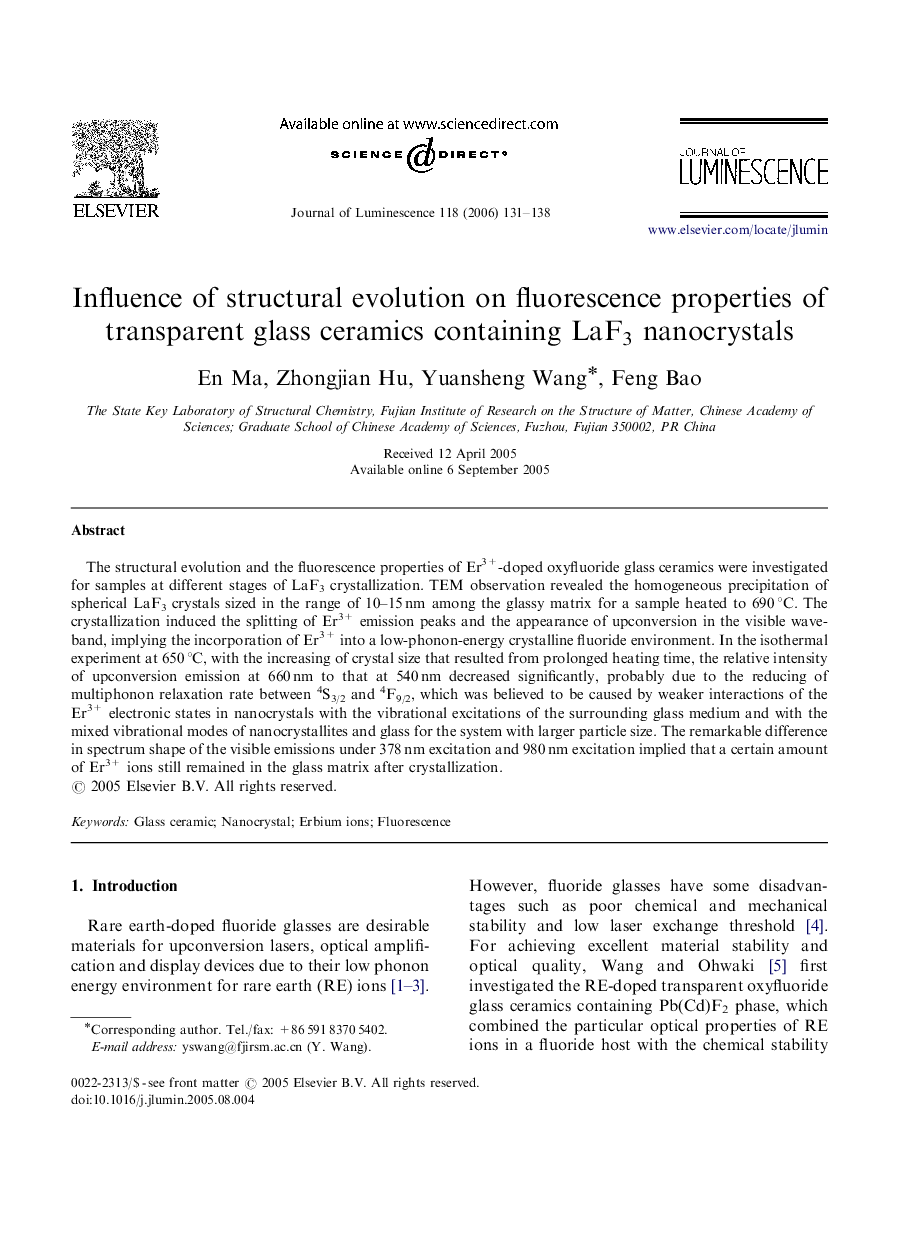| Article ID | Journal | Published Year | Pages | File Type |
|---|---|---|---|---|
| 5404293 | Journal of Luminescence | 2006 | 8 Pages |
Abstract
The structural evolution and the fluorescence properties of Er3+-doped oxyfluoride glass ceramics were investigated for samples at different stages of LaF3 crystallization. TEM observation revealed the homogeneous precipitation of spherical LaF3 crystals sized in the range of 10-15 nm among the glassy matrix for a sample heated to 690 °C. The crystallization induced the splitting of Er3+ emission peaks and the appearance of upconversion in the visible wave-band, implying the incorporation of Er3+ into a low-phonon-energy crystalline fluoride environment. In the isothermal experiment at 650 °C, with the increasing of crystal size that resulted from prolonged heating time, the relative intensity of upconversion emission at 660 nm to that at 540 nm decreased significantly, probably due to the reducing of multiphonon relaxation rate between 4S3/2 and 4F9/2, which was believed to be caused by weaker interactions of the Er3+ electronic states in nanocrystals with the vibrational excitations of the surrounding glass medium and with the mixed vibrational modes of nanocrystallites and glass for the system with larger particle size. The remarkable difference in spectrum shape of the visible emissions under 378 nm excitation and 980 nm excitation implied that a certain amount of Er3+ ions still remained in the glass matrix after crystallization.
Related Topics
Physical Sciences and Engineering
Chemistry
Physical and Theoretical Chemistry
Authors
En Ma, Zhongjian Hu, Yuansheng Wang, Feng Bao,
